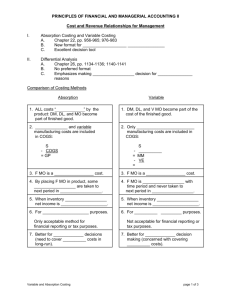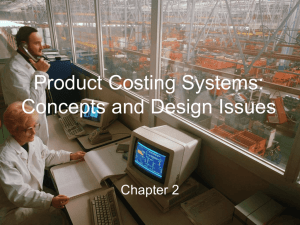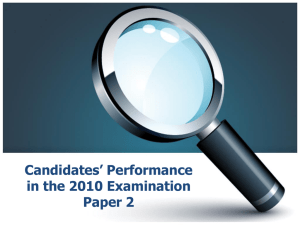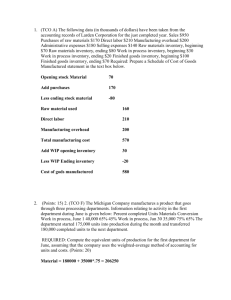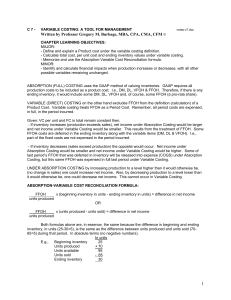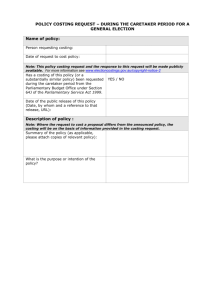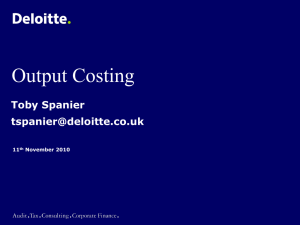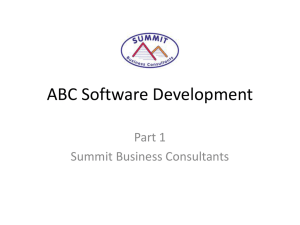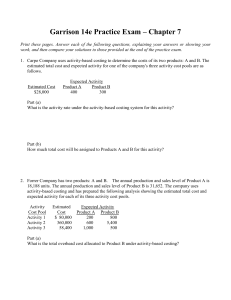Chapter 7 – Practice Exam
advertisement
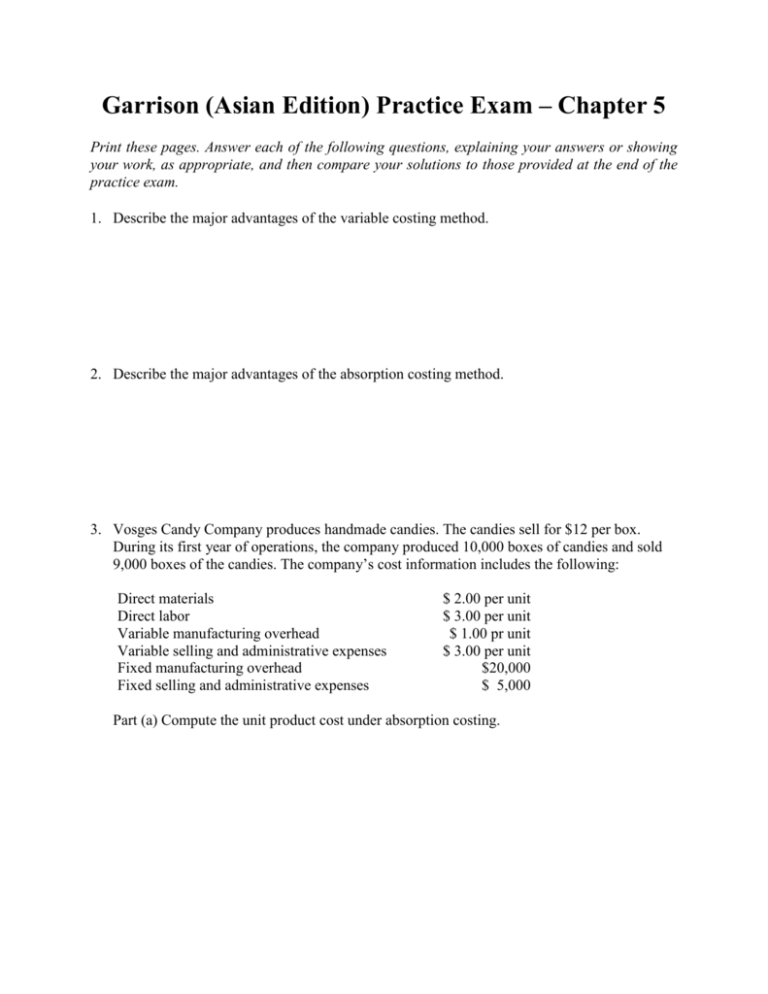
Garrison (Asian Edition) Practice Exam – Chapter 5 Print these pages. Answer each of the following questions, explaining your answers or showing your work, as appropriate, and then compare your solutions to those provided at the end of the practice exam. 1. Describe the major advantages of the variable costing method. 2. Describe the major advantages of the absorption costing method. 3. Vosges Candy Company produces handmade candies. The candies sell for $12 per box. During its first year of operations, the company produced 10,000 boxes of candies and sold 9,000 boxes of the candies. The company’s cost information includes the following: Direct materials Direct labor Variable manufacturing overhead Variable selling and administrative expenses Fixed manufacturing overhead Fixed selling and administrative expenses $ 2.00 per unit $ 3.00 per unit $ 1.00 pr unit $ 3.00 per unit $20,000 $ 5,000 Part (a) Compute the unit product cost under absorption costing. Part (b) Compute the unit product cost under variable costing. Part (c) Prepare an income statement using absorption costing. Part (d) Prepare an income statement using variable costing. Part (e) Explain the difference in the net operating income determined under the absorption and variable costing methods. GNBCY Practice Exam Solutions – Chapter 5 1. Solution (Learning Objective 4): Advantages of variable costing include: Method is compatible with CVP and TOC analysis, Method does not cause fluctuations in profit due to changing production and inventory levels, unlike the absorption method, Method show only variable product costs so it avoids the problem under absorption method where managers mistakenly think fixed manufacturing costs are variable product costs, Variable costing allows total fixed manufacturing overhead costs to be visible on the income statement, rather than being “buried” in the cost of goods sold and inventory figures, Variable costing avoids some of the problems with overhead costs allocations, and Variable costs are more easily used with standard costing and flexible budgeting. 2. Solution (Learning Objective 4): Advantages of absorption costing include: Method is required by GAAP and tax authorities, and Method reflects the full costs of manufacturing a product. 3. Part (a) Solution (Learning Objective 1): Direct materials Direct labor Variable manufacturing overhead Fixed manufacturing overhead ($20,000 divided by 10,000 units) Product cost using absorption costing $2.00 3.00 1.00 2.00 $8.00 Part (b) Solution (Learning Objective 1): Direct materials Direct labor Variable manufacturing overhead Product cost using variable costing $2.00 3.00 1.00 $6.00 Part (c) Solution (Learning Objective 2): Sales (9,000 units @ $12) Cost of goods sold: Beginning inventory Cost of goods manufactured (10,000 @ $8 per unit) Less: ending inventory (1,000 @ $8 per unit) Gross margin Less fixed manufacturing overhead Less selling & administrative expenses (variable of 9,000 @ $3 per unit + fixed of $5,000) Net operating income $108,000 $ 0 80,000 (8,000) 72,000 36,000 32,000 $ 4,000 Part (d) Solution (Learning Objective 2): Sales (9,000 units @ $12) Variable cost of goods sold (9,000 @ $6 per unit) Less variable selling & administrative expenses (9,000 @ $3 per unit) Contribution margin Fixed manufacturing overhead Fixed selling & administrative expenses Net operating income $108,000 54,000 27,000 27,000 20,000 5,000 25,000 $ 2,000 Part (e) Solution (Learning Objective 2): Note that there was no beginning inventory. As such, the difference in net operating income of $2,000 can be explained by looking at the amount of ending inventory reported using the two methods. The difference is due to the fixed manufacturing overhead costs (1,000 units in ending inventory @ $2 of fixed manufacturing overhead cost per unit = $2,000) is included in inventory (rather than expensed) when absorption costing is used, but is expensed immediately (rather than being included in inventory) when variable costing is used.
